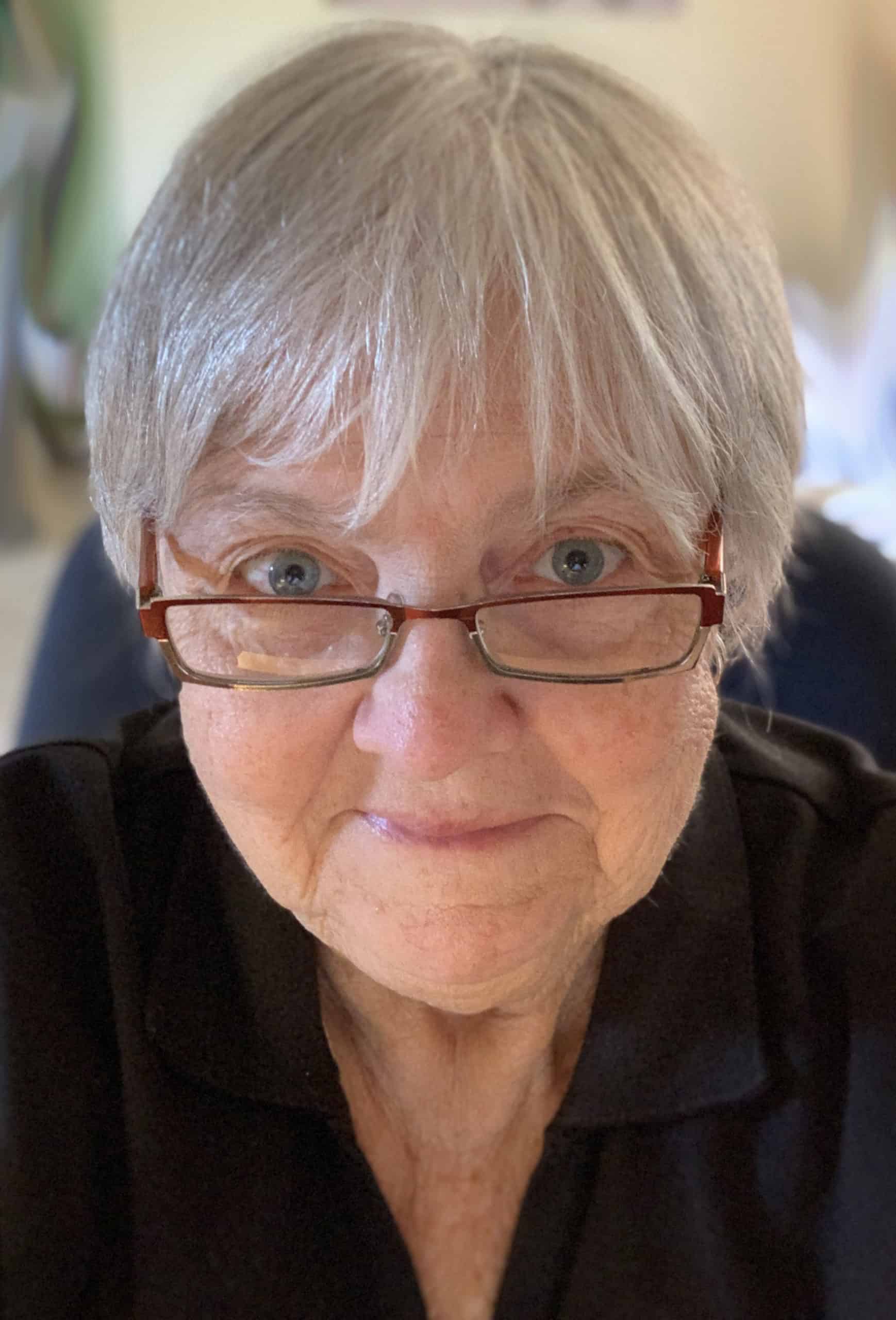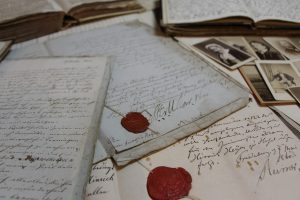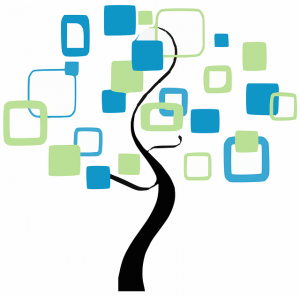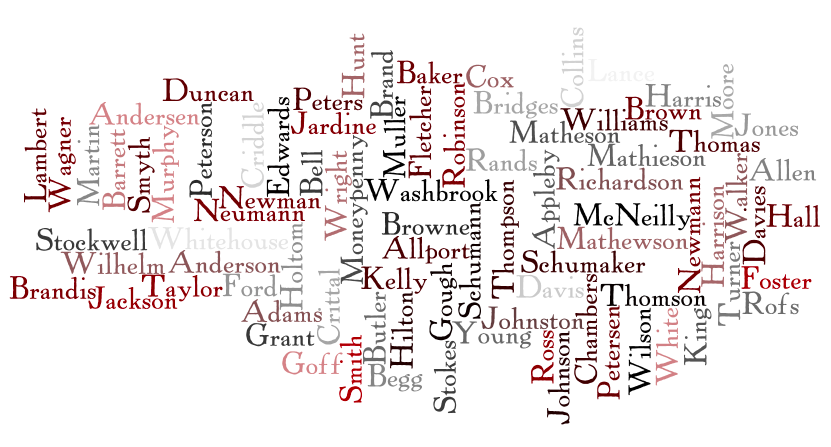1
December
Book Review: Unofficial Guide to Ancestry.com
Unofficial Guide to Ancestry.com: How to Find Your Family History on the No. 1 Genealogy Website
PUBLICATION DATE: 18th November 2014, Updated 2016
ISBN: 9781440336263
GENRE: Genealogy, Family History
FORMAT: Paperback, eBook - Kindle and Kobo
NUMBER OF PAGES: 256 pages
I borrowed this as an eBook from my online library but later discovered that there has been an updated edition in 2016 - as such, this review is based on the 2014 edition. This is the first book I have read of Nancy Hendrickson's and it is a clear winner. Nancy's clear, concise writing style makes this an easy book to read and follow.
The Author

Nancy has written numerous books in the field of Genealogy, including Family Tree Map Research on the Internet and 52 Weeks of Genealogy: Projects for Every Week of the Year. She is also a contributing editor at Family Tree Magazine. Nancy has a passion for genealogy and you can follow her on Twitter.
Book Synopsis
Chapter 1 - Getting Started with Ancestry.com Chapter 2 - Using Ancestry.com Family Trees Chapter 3 - Mastering Ancestry.com Search Chapter 4 - Using the Ancestry.com Card Catalog Chapter 5 - Making the Most of Census Records and Voter Lists Chapter 6 - Delving into Birth, Marriage, and Death Records Chapter 7 - Working with Military Records Chapter 8 - Using the Immigration and Travel Collection Chapter 9 - Digging into Newspapers, Publications, and Maps Chapter 10 - Searching Stories, Memories, and Histories Chapter 11 - Exploring Historical Pictures Chapter 12 - Making the Most of Schools, Directories, and Church Histories Chapter 13 - Using the Tax, Criminal, Land, and Wills Collection Chapter 14 - Exploring Genetic Genealogy with AncestryDNA Chapter 15 - Maximising Collaborative Opportunities Appendix A - Ancestry.com, Quick Links, and Shortcut Keys Appendix B - The Ancestry.com Corporate Family Appendix C - Ancestry Library Edition Appendix D - Records Checklists and Research Forms
Book Overview and Discussion
As can be see seen by the chapter listing, a lot of content is covered, starting with a basic introduction to Ancestry.com. This book contains everything you could need to get the most out of your membership. Each of the chapter headings clearly states what content is contained within it. The first chapter outlines basic navigation around the website, creating, and customising an account. Nancy discusses important genealogy basics such as organisation your documents - something I discussed recently here - and the storage and care of photographs. Nancy shows throughout the book, and clearly labelled chapters, what content you can find at Ancestry.com. In each chapter, she explains what the resources include, how to search for them, and where else you might be able to look for the records. She explains what information you are likely to find within each record, however, there is a strong emphasis on American sites and records. This is probably as Nancy and her ancestors are American and so the examples she had to show from her tree were American. I do think more emphasis on records for other countries would be beneficial especially for those people with no American history.Records include:
- Census Records
- Voters Lists
- Birth, Marriage, Death Records including vital, parish, and cemetery records.

- Military Records including casualty lists, KIA, Pensions, and honours records.
- Immigration and Travel include Naturalisation records with Ancestry.com holding the largest online collection for US, Canada, UK, and Australia.
- Newspapers, Periodicals, Magazines
- Maps, Atlases
- Dictionaries, Almanacs
- Stories, Memories, Histories - these include oral histories, society histories, and military histories
- Historical Pictures - there are literally millions of photos within 36 databases on Ancestry.com
- Schools, Directories, Church Histories
- Tax, Criminal, Land, and Wills Collections
 I really applaud Nancy for her regular cautions throughout the book about automatically accepting information as correct just because it is on the internet. Just because someone has a person or document on their tree does not mean it is correct. In my research, I have come across many trees that appear well researched but I have quickly identified the wrong person or document added. I am very cautious with what I accept as truth from trees. The book focuses a chapter on family trees, which is a good thing, as the cornerstone of the Ancestry.com experience is building a tree to add documents to. Nancy steps the user through the process of adding documents, stories, video, audio, and maps to a tree.
Knowing how to structure a search on Ancestry.com is invaluable especially given that a global search can give you as many as half a million hits! It is well worth your time reading the Search and Card Catalog chapters. Nancy clearly explains, step-by-step and with screenshots, how to use the search form by completing fields, filters, and categories. The Card Catalog is a wonderful, yet underused resource on Ancestry.com and lists all 32,000 databases. Nancy shows you how to drill down with a targeted search by filtering by location, collection, and date. You can look through the catalogue without a paid subscription to see if they have the records you require before getting a subscription.
I really applaud Nancy for her regular cautions throughout the book about automatically accepting information as correct just because it is on the internet. Just because someone has a person or document on their tree does not mean it is correct. In my research, I have come across many trees that appear well researched but I have quickly identified the wrong person or document added. I am very cautious with what I accept as truth from trees. The book focuses a chapter on family trees, which is a good thing, as the cornerstone of the Ancestry.com experience is building a tree to add documents to. Nancy steps the user through the process of adding documents, stories, video, audio, and maps to a tree.
Knowing how to structure a search on Ancestry.com is invaluable especially given that a global search can give you as many as half a million hits! It is well worth your time reading the Search and Card Catalog chapters. Nancy clearly explains, step-by-step and with screenshots, how to use the search form by completing fields, filters, and categories. The Card Catalog is a wonderful, yet underused resource on Ancestry.com and lists all 32,000 databases. Nancy shows you how to drill down with a targeted search by filtering by location, collection, and date. You can look through the catalogue without a paid subscription to see if they have the records you require before getting a subscription.
 She provides valuable tips on dealing with variations in spelling of names, strategies for searching for common names or maiden names. She also says that sometimes you will get a no search result is found. This could be because of a transcription error, the record isn't online, or the record simply doesn't exist.
She provides valuable tips on dealing with variations in spelling of names, strategies for searching for common names or maiden names. She also says that sometimes you will get a no search result is found. This could be because of a transcription error, the record isn't online, or the record simply doesn't exist.
 Nancy is a strong advocate of the collaborative opportunities that are afforded to members of Ancestry.com with a chapter dedicated to discussing message boards and the member directory. She tells a wonderful story of seeing pictures of her great-great-grandparents for the first time from another member of Ancestry.com. Then later tells a wonderful collaboration story of a woman identifying her orphan grandmother's family.
An entire chapter focuses on AncestryDNA and the growing industry of genetic genealogy. Nancy explains the science behind the test and gives a comprehensive explanation on evaluating the results. One notable absence from this chapter is the legal and privacy implications of having your DNA collected. Whilst the chances of law enforcement requesting access to this information are low, it has happened, I believe some discussion around this is warranted.
Nancy is a strong advocate of the collaborative opportunities that are afforded to members of Ancestry.com with a chapter dedicated to discussing message boards and the member directory. She tells a wonderful story of seeing pictures of her great-great-grandparents for the first time from another member of Ancestry.com. Then later tells a wonderful collaboration story of a woman identifying her orphan grandmother's family.
An entire chapter focuses on AncestryDNA and the growing industry of genetic genealogy. Nancy explains the science behind the test and gives a comprehensive explanation on evaluating the results. One notable absence from this chapter is the legal and privacy implications of having your DNA collected. Whilst the chances of law enforcement requesting access to this information are low, it has happened, I believe some discussion around this is warranted.
Conclusion
I hadn't previously read any books on Ancestry.com and mainly worked out Ancestry.com myself through trial and error. Having a book as a quick reference point would have saved me time in my research. It would have been good to refer back to the topic I required without trawling the internet for help. I read this book from cover to cover, although I would recommend reading a chapter and having the book beside you for reference as you explore Ancestry.com. One thing I really like about this book is it does contain links outside of Ancestry.com and Nancy does discuss the value of utilising these other sites. I found Nancy's writing style easy to read and understand. She clearly has a very good understanding of Ancestry.com and her passion for genealogy shone through in her writing. Whilst this book would appear to be aimed at a novice in genealogy and Ancestry, there is information in here that a more seasoned researcher could take on board.
One thing I really like about this book is it does contain links outside of Ancestry.com and Nancy does discuss the value of utilising these other sites. I found Nancy's writing style easy to read and understand. She clearly has a very good understanding of Ancestry.com and her passion for genealogy shone through in her writing. Whilst this book would appear to be aimed at a novice in genealogy and Ancestry, there is information in here that a more seasoned researcher could take on board.
STRENGTHS OF THE BOOK:
- Screenshots of Ancestry.com with easy to follow step-by-step instructions to conduct in-depth searches.
- The reader is reminded regularly to not automatically accept that information online is correct - use it as a starting point to prove or disprove anything you find.
- The reminders to log off as not all records are online - archives, societies, and libraries contain valuable content.
- Links to other websites that may contain the information you are looking for.
WEAKNESSES OF THE BOOK:
- Ancestry.com updates their website regularly so some screenshots in the book are outdated. Although this may have been remedied in the 2016 edition, in this day and age, it is very hard for a book to stay totally relevant for long.
- Some website links no longer exist.
- Most examples are for America with links to American-specific sites far outnumbering other countries e.g. US County Creation Dates or US Nicknames. People with no links to America might find it difficult to translate it to their searches.
- The DNA section does not cover legal and privacy issues.
You can pick up a paperback copy or Kindle version of Unofficial Guide to Ancestry.com: How to Find Your Family History on the No. 1 Genealogy Website on Amazon today.
on Amazon today.


Wow. I didn’t realize we need a book to navigate this site and understand how to work it. LOL. I subscribed to a membership, but at the time it was like $89.00 so I thought no way. Maybe I’ll buy the Kindle version. Thanks for the review and run down.
Hi Shalisha
I am so glad I could point you in the direction of this book. It is a great resource to help navigate the millions of records on Ancestry.
Regards
Megan
Dear Megan thank you for the information about the plantations, I knew about them but not sure how to start. It does help knowing that I can start without waiting to get a DNA test. Thank you again for your direction. It’s nice to talk to someone who is knowledgeable of what one should do to begin this process. I think it’s something that I’ll delve into for this period of my life, I would like for my daughter and her sons to know more than I do
Hi Sylvia
I’m glad I could be of assistance! It is a lovely hobby to do and a great gift for generations to come.
Regards,
Megan
Interesting review of the book, it makes me want to purchase the Kindle version for my sister-in-law. She is the person in the family who has been tracing both sides of her family and drawing me in little by little over the years. I have never been sure of the honesty of ancestry.com, I have been to their website many times over the years but never joined. This book serves as a guide in using the site to build the family tree. For my mother’s 75th birthday we built the family tree basically from my grandparents both maternal and paternal. As African-Americans, we can only go so far because we had no records, so before I could use the book I would need to do a DNA test, is that correct?
Hi Sylvia
Firstly, I am sorry for your ancestors hardships. You don’t require a DNA test to read the book or start using Ancestry.com, however, as you said there is a lack of records kept for African-Americans. I do recall reading a while back that there are some records that have survived of the plantation homes. Apparently, they had books they kept for running the plantations that often included purchase and sale of slaves so it is possible that you may be able to find these. Being of English, Scottish, and Australian descent, I haven’t had a lot of need to delve into American history even though my 3rd great-grandmother did move to Wisconsin to be with her family, her son, my great-great-grandfather stayed in England. So looking into plantation home records may give you some information. Anyway good luck with your research – I would love to hear what you find out!
Regards,
Megan
I found your information on this book very good. I’ve been on ancestry.com a little bit, but never join as a paid member. I always wondered how they got all that information on everybody. Took a lot of time and effort I bet. Going back to this book, it would be handy to have, while going through the website.
Hi Fred
I’m glad my review has been helpful. Ancestry.com has been around for many years and continue to add new content every day. It is amazing what it has evolved into over time.
Regards,
Megan
I think this is a great idea and since I’ve been using Ancestry.com, I kinda feel like I could use a full-on guide to it. It’s good that the author draws on her own knowledge of genealogy as well as other resource besides the ones on Ancestry. Thanks for the thorough review!
Hi Penelope
I’m glad you found this review helpful. Ancestry.com is such a large site, with so much information it is easy to get bogged down and lost. Having a resource such as this book will help to break it down for you.
Regards,
Megan
Hi Megan
I can see that ancestry means a lot to you and I think that is wonderful! I have a French family background and my family was never a close family, kind of a messed up family background really. I like the way you’ve outlined the chapters of the book showing us what the book consists of. This is a well thought out article and I think will be of great help to anyone who is looking for their family history. Well done Megan!
Hi Angie
Thank you for taking the time to read my review. I hope you enjoy reading the book to help you start your family history journey with Ancestry.com.
Regards,
Megan
Thank you for such an amazing article on genealogy.
I’ve recently found out I had a large amount of British in me when I doubt I was full blooded Portuguese. This is fascinating to me. Thank you for this post.
Your page is very informative with a lot of information.
Hi Liz
I’m glad you enjoyed my review. I hope the book will be helpful when you start your research at Ancestry.com.
Regards,
Megan
This page is very interesting. I recently had my DNA tested through 23andme. I always wondered what my heritage was like even though I was 100% Portuguese. I found out I wasn’t, that a lot of my heritage was British. I find this page very interesting.